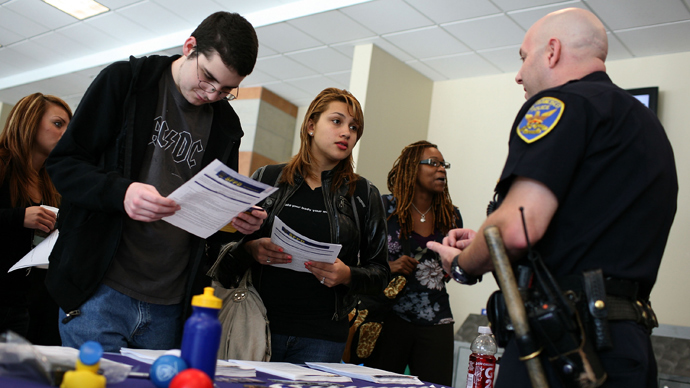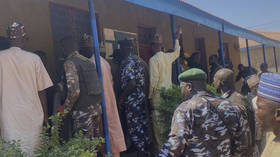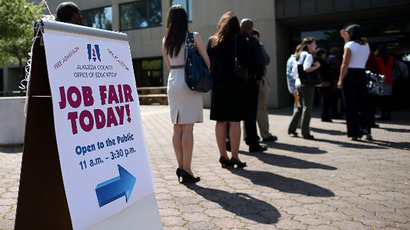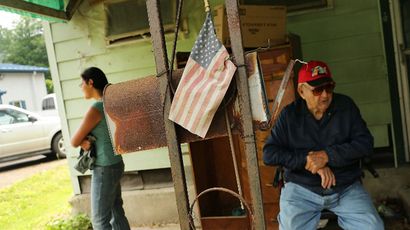15% of young Americans out of school, work - study

Nearly six million young people in America are neither in school nor working, according to a new study released Monday. The finding brings more bad news to a generation that has become familiar with grim economic outlooks.
Almost 15 percent of those aged 16 to 24 have neither a job nor
are in school, Opportunity Nation found in its new study, 2013
Opportunity Index, which measures economic, education, and other
interconnected factors that help assess quality of life in
America.
The study found that the most supportive states in providing
opportunity for youth are Vermont, Minnesota, and North Dakota.
The least supportive are Nevada, Mississippi, and New Mexico,
signifying that location determines many opportunities for the
young.
Some of the nation’s largest cities - New York, Los Angeles,
Chicago, Houston, Philadelphia, Dallas, Atlanta, Miami, and
Riverside, CA - all have over 100,000 idle youth, the report
noted.
"This is not a group that we can write off. They just need a
chance," said Mark Edwards, executive director of Opportunity
Nation, a coalition of businesses, advocacy groups, policy
experts and nonprofit organizations that aim to increase economic
mobility. "The tendency is to see them as lost souls and see
them as unsavable. They are not."
Opportunity Nation found that in the past year, the number of
families living in poverty has gone up in 49 states, and
household median income has fallen in 45 states.
Though the study found that while youth poverty rates have
increased, unemployment rates for all ages have declined. Yet the
group cautions that the fall in jobless rates may be attributed
to people no longer looking for a job, or indicate that some have
stopped searching and have taken low-wage jobs.
The study tracked 16 factors – including internet access, college
graduation rates, income inequality, and public safety - to
identify the quality of life for youth in America.
Another report on youth unemployment released in October by the
Georgetown University Center on Education and the Workforce and
The Generations Initiative found that the labor force
participation rate for young adults is at its lowest point since
1972, and that employment rates for high school graduates and
BA-holders went down 13 and 8 points, respectively, since 2000.
Concurrently, another October report - this one by the
Organization for Economic Co-operation and Development - found
that about 19 percent of all Americans say they have more
education than they need to qualify for their job.
The Georgetown report also noted that times are especially tough
on African Americans. Since the recession of 2007, peak
unemployment for young African Americans is double the peak
unemployment for whites, according to the study.
These reports and statistics add to the voluminousrecord of recent downward trends in the American
economy. Some of the most damning details of these trends are
exemplified in two recent findings from the last year.
The income gap between the wealthiest one percent of
Americans and the rest of the country hit an all-time high in
2012, the Internal Revenue Service found a year ago. And in early
2013, the Center for Economic and Policy Research reported that
40 percent of Americans now make less than minimum wage workers
did in 1968, based on numbers adjusted for inflation.














